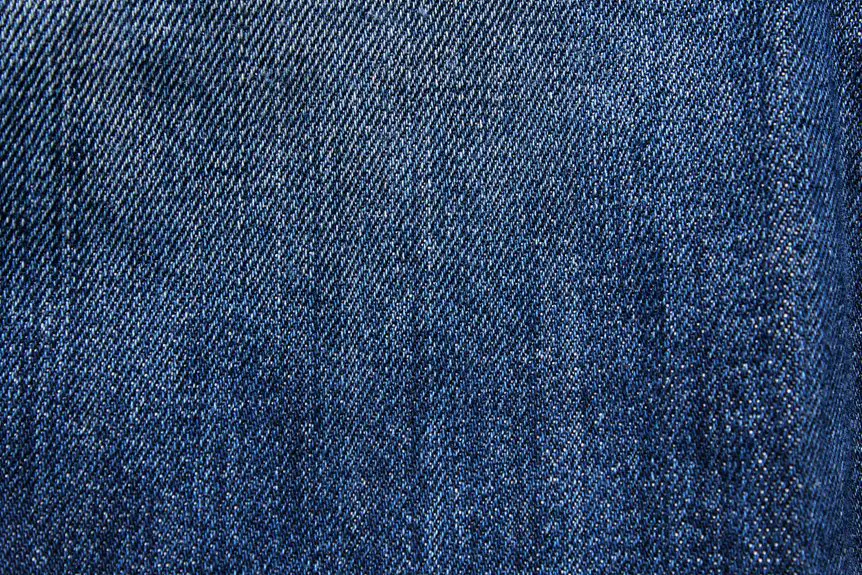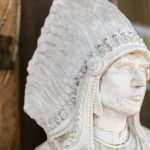You’ll be amazed by the intricacy of Japanese double weft ikat, where artisans tie and dye silk threads repeatedly to create precise, vibrant patterns. Using natural dyes and bamboo looms, they weave rich symbols like cranes and pine trees that reflect deep cultural meanings. This craft has survived centuries, blending tradition with modern innovation. If you want to uncover how these meticulous techniques and motifs came to symbolize resilience and beauty, there’s much more to discover.
Table of Contents
Key Takeaways
- Japanese double weft ikat features complex resist-dyeing and precise weaving techniques that create detailed, multi-colored patterns.
- High-quality silk threads and natural dyes are essential for achieving the fabric’s smooth texture and vibrant colors.
- The crafting process requires meticulous yarn tying, staged dyeing, and careful alignment to maintain intricate pattern integrity.
- Traditional motifs like cranes and pine trees symbolize longevity and steadfastness, adding deep cultural meaning to the designs.
- Preservation efforts blend traditional craftsmanship with modern innovation, ensuring the art form’s resilience and ongoing cultural relevance.
Origins and Historical Significance of Double Weft Ikat
Although you mightn’t realize it at first, the origins of Japanese double weft ikat reveal a rich cultural tapestry woven over centuries.
When you explore this craft, you’ll discover it dates back to the Edo period, where artisans perfected complex dyeing techniques to create intricate patterns.
You’ll appreciate how double weft ikat isn’t just about aesthetics; it carries deep symbolic meanings tied to status, tradition, and identity.
As you investigate further, you’ll see how regional variations reflect local histories and values.
This art form survived despite industrialization, showing the resilience of cultural heritage.
When you understand its historical roots, you gain insight into how double weft ikat connects past and present, making every piece a story you can wear.
Materials and Tools Used in the Craft
Three essential materials form the foundation of Japanese double weft ikat: silk threads, natural dyes, and sturdy bamboo looms.
You’ll find that high-quality silk provides the smooth texture and strength needed for intricate patterns. Natural dyes, often derived from plants and minerals, give the fabric its rich, lasting colors. Bamboo looms, lightweight yet durable, allow precise control during weaving.
Besides these, you’ll use resist materials like wax or tightly wrapped threads to protect sections from dye. Tools such as wooden shuttles help you handle the silk threads smoothly.
Mastering these materials and tools is vital because they directly affect the ikat’s final appearance and durability. Understanding their properties lets you appreciate the craftsmanship behind every piece.
Step-by-Step Process of Creating Double Weft Ikat
To create Japanese double weft ikat, you start by carefully preparing the yarn through precise tying and resist techniques.
Next, you dye the yarn in stages to achieve the desired patterns.
Finally, you weave the dyed yarns together, bringing the intricate designs to life.
Yarn Preparation Techniques
Preparing yarn for Japanese Double Weft Ikat involves meticulous planning and precise execution to guarantee the patterns align perfectly during weaving.
First, you select high-quality yarns, often silk or cotton, ensuring uniform thickness and strength.
Next, you carefully measure and section the yarns according to the intended design dimensions.
Then, you tightly bind areas meant to resist dye, using waterproof threads or resists to define patterns clearly.
After securing these bindings, you prepare the yarn bundles for dyeing, making sure to keep tension even to avoid distortion.
Throughout, you maintain strict control over alignment, as any misplacement can disrupt the final motif.
This preparation stage lays the foundation for the complex interplay of colors and shapes characteristic of Double Weft Ikat.
Dyeing and Weaving Process
Begin the dyeing and weaving process by carefully immersing the bound yarn bundles into dye baths, allowing colors to penetrate only the exposed sections.
After the first dyeing, you dry and rebind the yarn to protect certain areas, then dip it into additional dye baths for layered, intricate patterns.
Once dyeing is complete, you unwind the yarn and prepare it on the loom, aligning both the warp and weft threads precisely.
As you weave, you maintain tension and monitor the pattern’s alignment, since double weft ikat requires weaving with dyed threads in both directions.
This delicate process demands patience and skill to guarantee the motifs emerge crisply.
Traditional Patterns and Symbolism
Traditional patterns in Japanese Double Weft Ikat carry rich symbolism that connects you to centuries of cultural heritage. When you examine these motifs, you’ll notice recurring themes like cranes symbolizing longevity and pine trees representing steadfastness.
These designs aren’t just decorative; they convey messages and hopes passed down through generations. You’ll also find geometric shapes like diamonds and stripes, each holding specific meanings tied to protection or prosperity.
Patterns carry deep messages and hopes, with shapes symbolizing protection and prosperity across generations.
By wearing or displaying these patterns, you actively participate in preserving cultural narratives. The careful placement of motifs in the double weft technique enhances their visual impact, making the symbolism even more striking.
Understanding these patterns deepens your appreciation for the skill and storytelling embedded in every piece of Japanese Double Weft Ikat.
Regional Variations Across Japan
The rich symbolism found in Japanese Double Weft Ikat takes on unique forms depending on the region where the fabric is crafted. When you explore different areas, you’ll notice distinct motifs, color palettes, and weaving techniques that reflect local culture and environment. For example, Okinawa favors bright, tropical-inspired patterns, while the Kaga region emphasizes subtle, nature-based designs. Each variation tells a story tied to its origin.
| Region | Common Motifs | Color Palette |
|---|---|---|
| Okinawa | Hibiscus, waves | Bright reds, blues |
| Kaga | Maple leaves, cranes | Earth tones, muted greens |
| Amami | Pine trees, turtles | Deep indigos, blacks |
Understanding these differences helps you appreciate the rich diversity in this exquisite art.
Preservation and Modern Adaptations
While Japanese Double Weft Ikat faces challenges from industrialization and changing tastes, craftsmen and communities are actively preserving its techniques and heritage.
You can witness this dedication in local workshops where artisans teach younger generations, ensuring these skills don’t vanish.
Modern adaptations blend traditional patterns with contemporary fabrics and uses, making ikat relevant today.
When you explore this art, you’ll find it’s not just about fabric—it’s about cultural identity and resilience.
- You feel the patience woven into every thread.
- You see history alive in vibrant colors.
- You experience community pride passed down.
- You appreciate innovation respecting tradition.
- You connect with a legacy that endures.
Appreciating the Artistry and Value of Double Weft Ikat
As you explore the dedication behind preserving Japanese Double Weft Ikat, you begin to see why this craft holds such value.
You recognize the meticulous skill required to align two sets of dyed threads perfectly, creating patterns that seem to float on the fabric. Each piece reflects not just technical mastery but also generations of cultural heritage.
When you hold a Double Weft Ikat textile, you’re touching history woven with patience and artistry. Understanding the labor-intensive process helps you appreciate the time and effort invested, making the fabric more than just material—it’s a statement of tradition and beauty.
Frequently Asked Questions
How Does Double Weft Ikat Compare to Other Ikat Techniques Globally?
You might not know that less than 10% of ikat worldwide uses double weft. Compared to other ikat techniques, double weft creates denser, more durable fabrics with richer patterns, making your textiles truly stand out globally.
What Are Common Challenges Artisans Face During the Dyeing Process?
You’ll struggle with precise alignment during dyeing, as colors must match perfectly on both warp and weft threads. Controlling dye absorption and preventing bleeding are tough, requiring patience and skill to achieve sharp, vibrant patterns.
Are There Specific Festivals Celebrating Double Weft Ikat in Japan?
You won’t find specific festivals solely for double weft ikat in Japan, but you can catch traditional textile celebrations where artisans showcase intricate weaving techniques, including double weft ikat, especially in regions known for their weaving heritage.
How Does Climate Affect the Dye Absorption in Double Weft Ikat?
You might think climate doesn’t matter, but it does—it affects dye absorption in double weft ikat by influencing fiber moisture and temperature. Higher humidity helps dyes penetrate evenly, while dry conditions can cause uneven coloring, impacting the final design.
Can Double Weft Ikat Fabrics Be Used in Contemporary Fashion Design?
You can definitely use double weft ikat fabrics in contemporary fashion design. Their unique patterns and texture add depth and sophistication, making your creations stand out while honoring traditional craftsmanship with a modern twist.
- How to Make Fabric Flowers Using Jute - June 28, 2025
- How to Use Jute Erosion Control Fabric in Your Landscape - June 28, 2025
- How to Sew With Jute Fabric: a Beginner’s Guide - June 28, 2025







